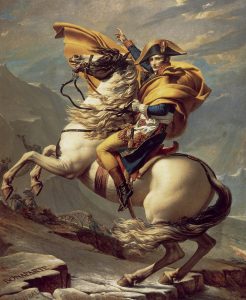
In the ancient world, the ideal of female beauty derived from a Greek canon, from marble sculpted deities by artists who modeled the best features of various women to create a virtual, ideal and absolute beauty. This ideal beauty, combined with the hairstyles and clothing of the classical tradition, has always been well represented artistically in Pompeian painting and sculpture.
A work of art which can be considered a real cultural icon of Greek beauty is the famous “Venus Anadyomene” (from Greek, “Venus Rising From the Sea”), the goddess of love, depicted in the act of rising from the sea and resting her hands on wet hair. Originally it was created by the famous Greek painter Apelles in the 4th century B.C. for the Asklepeion, the temple dedicated to Asclepius, on Cos, a Greek island facing Turkey. According to the different versions of the story, either Phryne, the model used by the great artist was a very famous hetaera [ among the Greeks, a courtesan, normally a stranger, free or a slave, elegantly dressed and, in general, rather highly cultured], or Campaspe, lover of Alexander the Great.
The painting was later brought to Rome by Augustus, and placed in the Temple of Venus Genetrix, to evoke the mother of the “gens Iulia” (Strabo 14.2.19). However this masterpiece of Greek art was also very famous in the area of Mount Vesuvius. This is confirmed by an inscription found in Pompeii where the scriptor, the writer, compared his beloved to the Venus of Apelles (CIL IV 6842 = CLE 2057): Si quis non vidi(t) Venerem quam pin[xit Apelles] | pupa mea aspiciat: tali set i[lla nitet].
The wide diffusion of this model is confirmed by the dozens of copies of the Venus Anadyomene spread among all the social classes of the population, at various artistic levels, from marble and bronze statues, as well as wall frescoes (such as in Pompeii in the House del Prince of Naples – see photo), but it is above all in the decoration on small tools of instrumentum domesticus, in particular on hair pins, where she was represented. Sculpted in bone, they were relatively inexpensive and multi-purpose instruments, widespread even in modest-sized houses, ubiquitous in female beauty care: they served as sharp instruments for applying makeup and also for dividing and styling hair. The hair pins could remain fixed in the hair to be within easy reach in case of need and were also portable amulets. Such a hair pin, together with an amulet pendant also in the shape of Anadyomene, was found in the house of L. Elvio Severo in Pompeii (1). In addition, the box for ointments and toiletry items in the Imperial house in Pompeii was secured by a bronze padlock in the shape of the same goddess. (2)
BIBLIOGRAPHY:
- Berg, “Donne medico a Pompei?”, in A.Buonopane, F. Cenerini (a cura di), “Donna e lavoro nella documentazione epigrafica” , Atti I seminario sulla condizione femminile nella documentazione epigrafica (Bologna, ottobre 2002), Faenza 2003, pp. 131-154
- Ria Berg “Attrarre” – in Massimo Osanna e Carlo Rescigno, “Pompei e i Greci”, Electa 2017, pp. 213-214











